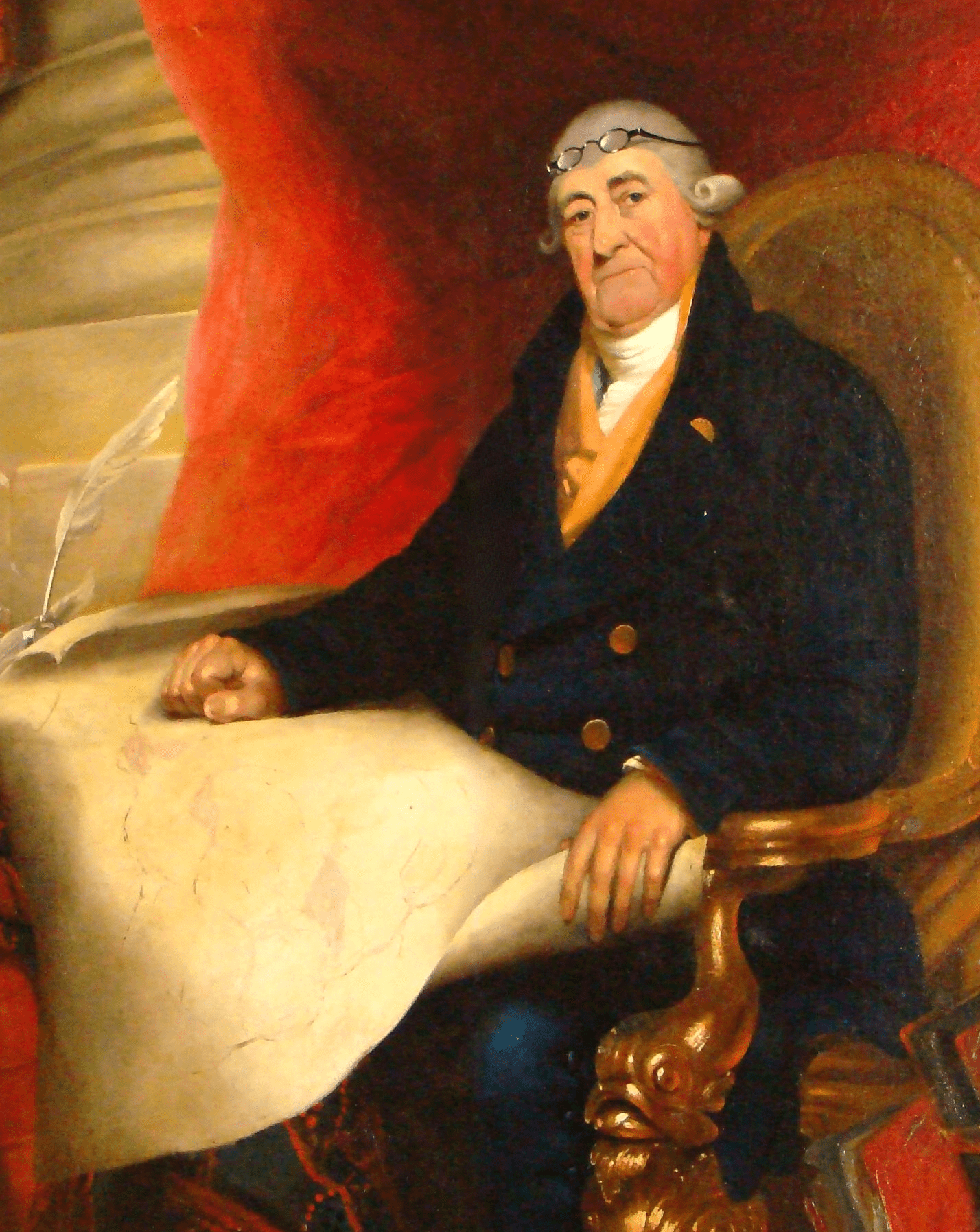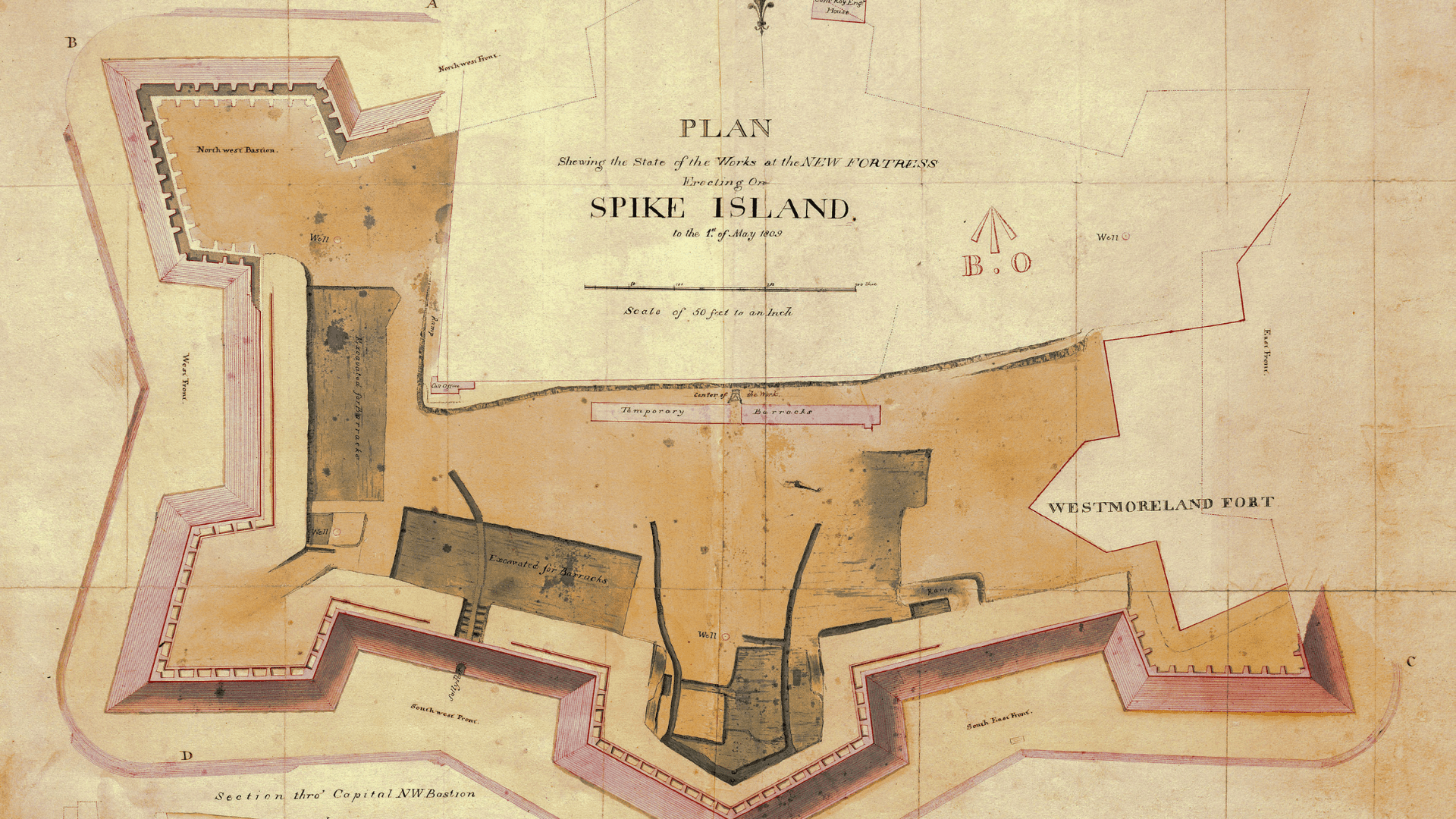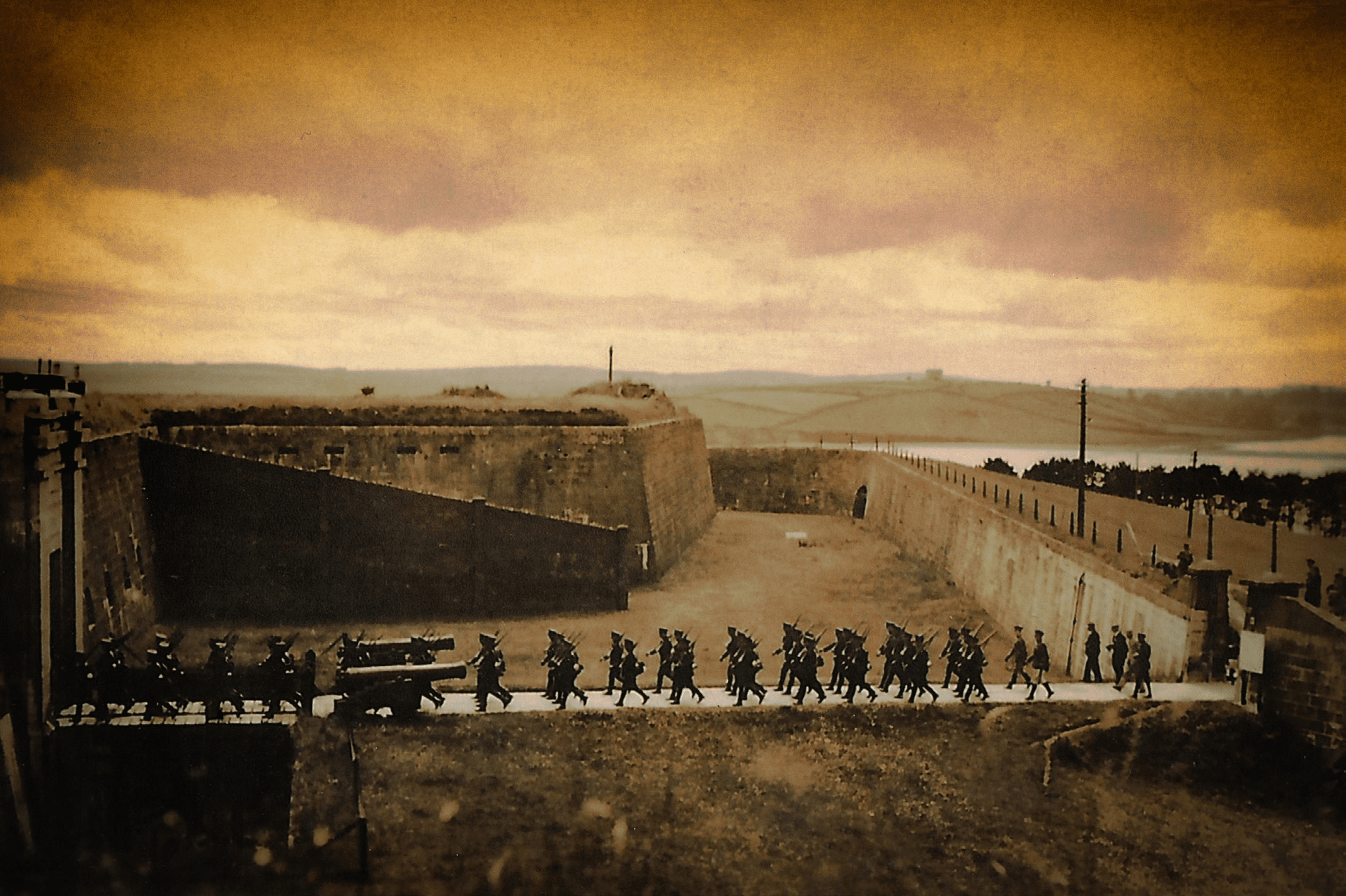Spike Island: the First Two Forts

The first fort on Spike Island was a modest affair. In 1779 the British Army erected an earthwork fort on the south-east corner of the island, armed by a battery of eighteen 24-pounder cannons. It did not last long. When the American War of Independence ended in 1783, the threat of attack receded and the fort was demolished to save on rent costs. However, it was not long before a new fort was planned.
In 1789 work began on a second fort. Designed by Colonel Charles Vallancey (1731-1812), Chief Engineer of Ireland and named Fort Westmoreland (albeit with a different spelling) in honour of John Fane, 10th Earl of Westmorland KG PC (1759-1841), Lord Lieutenant of Ireland, this was a far more impressive affair. It was built of stone, with a bomb-proof tower rising high above the walls, and armed with 60 guns and mortars, some mounted on field carriages. As the fort was built on a corner of the island, if an enemy chose to exploit this weakness and land on the island out of sight of the fixed guns, the garrison would be forced to fight in the open using the mobile field guns.
The ‘New’ Fort Westmoreland

With the regicide of King Louis XVI of France and the outbreak of war between Britain and France in 1793, the British once again began to fear an invasion of Ireland. In 1796 the French did indeed attempt to invade Ireland, though they targeted Bantry Bay rather than Cork Harbour. In his Military Itinerary of Ireland (1796) Vallancey suggested that the French chose Bantry Bay rather than Cork because they knew that Cork Harbour was ‘strongly fortified’ though he noted that ‘If the enemy had taken possession of Carlisle or Camden forts, at the entrance of the harbour, he would soon have driven us out of Spike Island (the principal defence and strength of this harbour).’
In 1802, General John Hope PC KB FRSE (1765-1823), 4th Earl of Hopetoun, recommended that a major fortress be constructed on Spike Island. He considered Spike Island to be ‘the true point of defence’ for Cork Harbour. Lieutenant General David Dundas (1735- 1820) was consulted by the Duke of York, Commander in Chief, who also recommended that a fortress should be erected on Spike Island.
Although the 1796 French invasion failed, the threat remained throughout the Napoleonic Wars. The British decided to strengthen the defences of Cork Harbour with a series of five Martello towers and three forts – Camden Fort, Fort Carlisle and a ‘new’ Fort Westmoreland on Spike Island – to provide an impregnable defence of the harbour, the naval base at Haulbowline and the victualling station.
Work on the ‘new’ Fort Westmoreland began in 1804 with a design that was, for the time, the pinnacle of defensive military architecture. It was constructed on a distinctive star-shaped plan, with six corner bastions – angled to maximize defensive fire from concealed positions – connected by ramparts and surrounded by a dry moat. Most of the buildings were well hidden to prevent bomb damage. Outside the fort was a glacis, a smooth slope extending outwards from the edge of the moat, designed to leave attackers nowhere to hide.
On 6 June 1804 the foundation stone of the new fortress was laid by Major General Sir Eyre Coote KB (1762-1823) and construction began under the direction of Lieutenant Colonel Sir Charles Holloway (1749-1827). It was an enormous undertaking. In 1815 the workforce consisted of 161 labourers, 116 masons, 63 quarrymen, 22 carpenters, 13 apprentice carpenters and 10 boatmen. Yet, sixteen years later, because of problems and delays in the early years of construction, only the rudiments of the fort were in place. By that time the Napoleonic Wars were over and, once again, the threat of invasion had receded. Accordingly, work was abandoned, leaving Fort Westmoreland incomplete and lightly garrisoned. In fact, the fort would not be completed until the 1860s. Instead, in 1847, it was converted into a convict prison and a new chapter opened in the history of Spike Island.
Treaty Port

On 6 December 1921, the Anglo-Irish Treaty was signed in London. It effectively concluded the War of Independence and set in motion a series of events that would bring into existence the Irish Free State exactly one year later. Under the terms of the treaty, Britain retained sovereignty over three strategically important ports in Ireland, known collectively as the ‘Treaty Ports’: Cobh (then called Queenstown) and Berehaven, both in County Cork, and Lough Swilly, in County Donegal.
The British government retained a military presence on Spike Island until 11 July 1938, the seventeenth anniversary of the truce that was the beginning of the end of the War of Independence. On this date, the island was ceded to the Irish State. The handover ceremony took place in the presence of the Taoiseach, Éamon de Valera, and other senior members of the Irish government.
Following the handover, Spike Island became an Irish Army base garrisoned by the Artillery Corps, Coastal Defence Artillery (CDA). During the Second World War (known in Ireland as ‘The Emergency’), Fort Westmoreland played a key role in the protection of the harbour, just as it had during World War One. All ships entering the harbour were inspected to ensure that they posed no threat and it was the six-inch guns of Spike Island that enforced this system.
The guns fired blank ammunition to warn merchant craft who were not observing the rules and on one occasion two sand-filled rounds had to be fired before a vessel complied. The master of an offending vessel ended up in the District Court and was usually fined. During this period, and again in the 1970s, the fort also housed a military detention barracks for soldiers who had committed military offences.
In 1951, Fort Westmoreland was renamed Fort Mitchel in honour of John Mitchel, the island prison’s most famous inmate.
